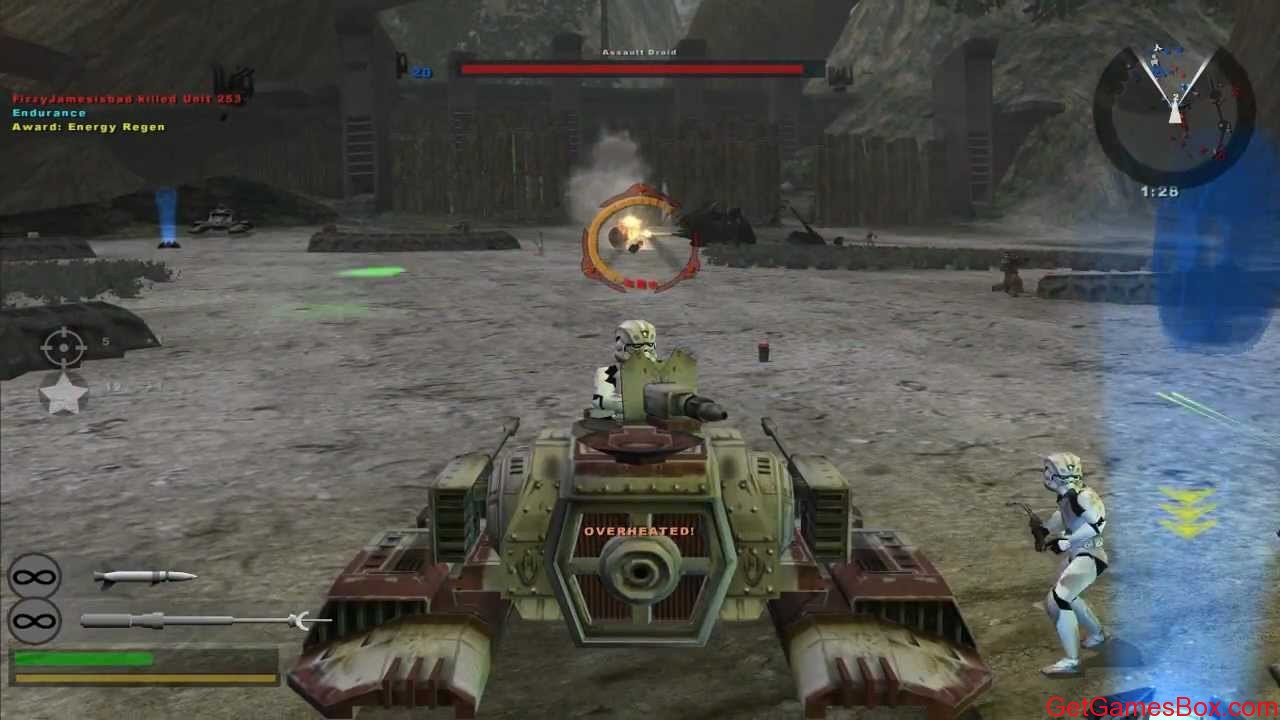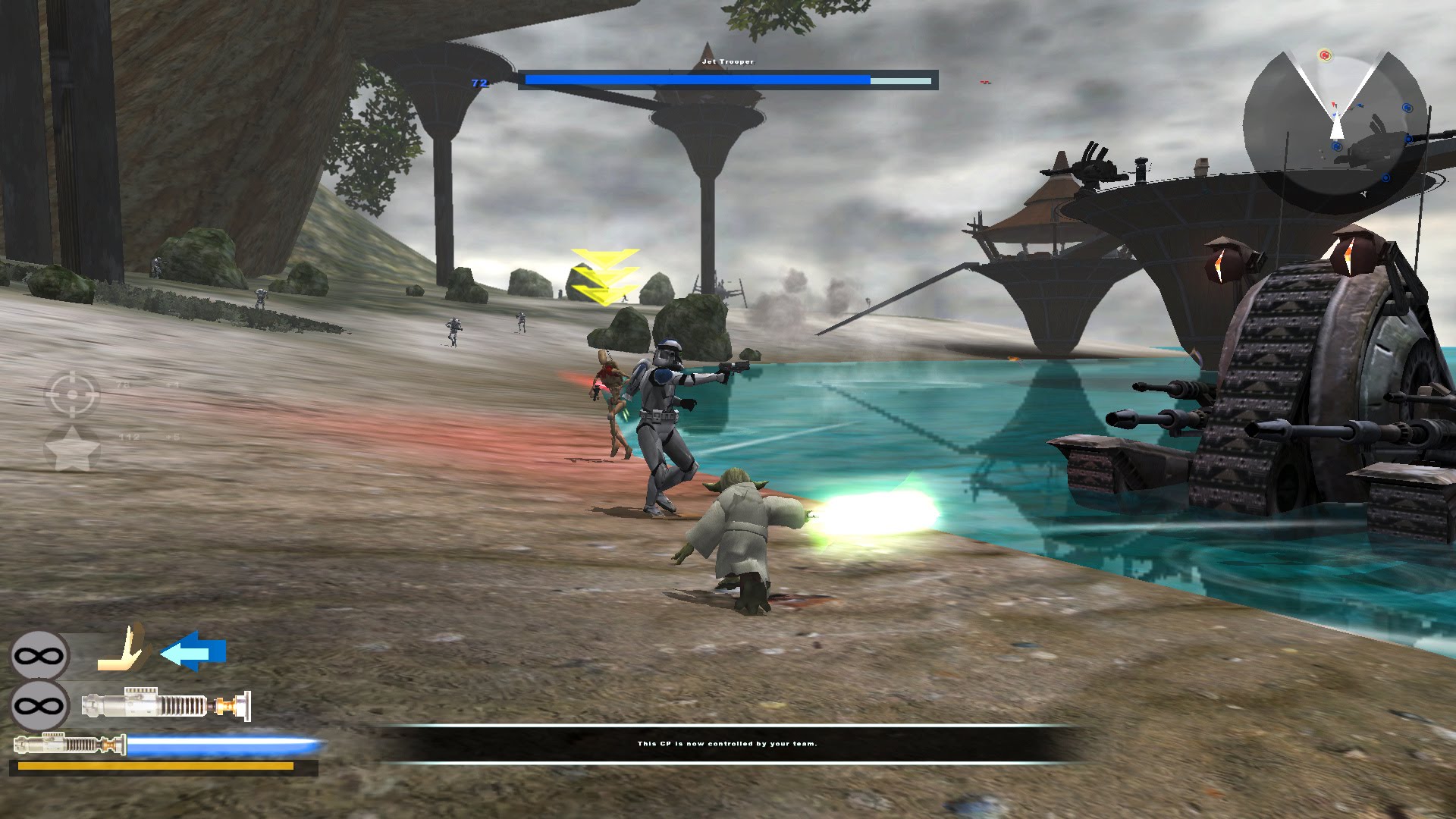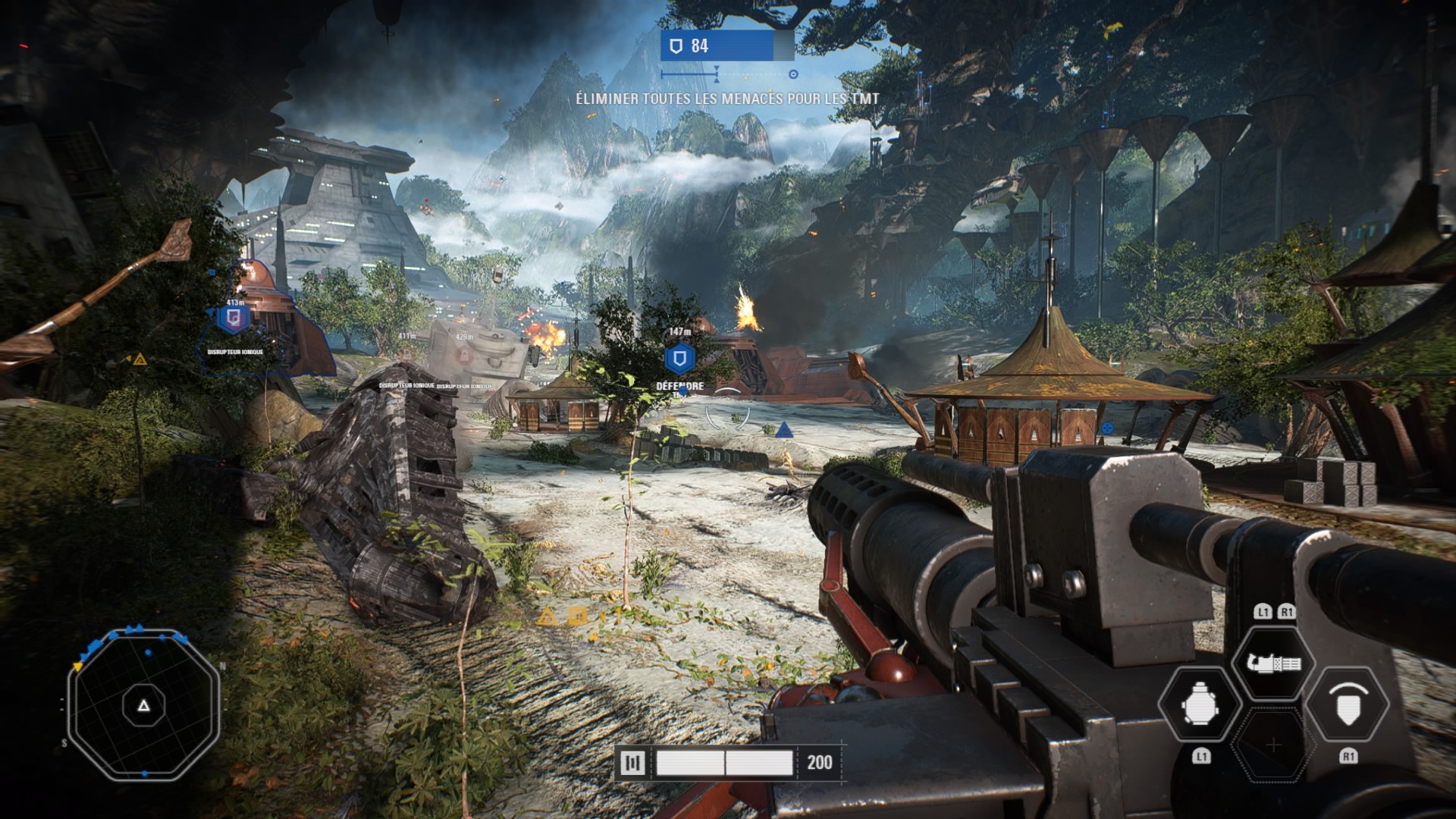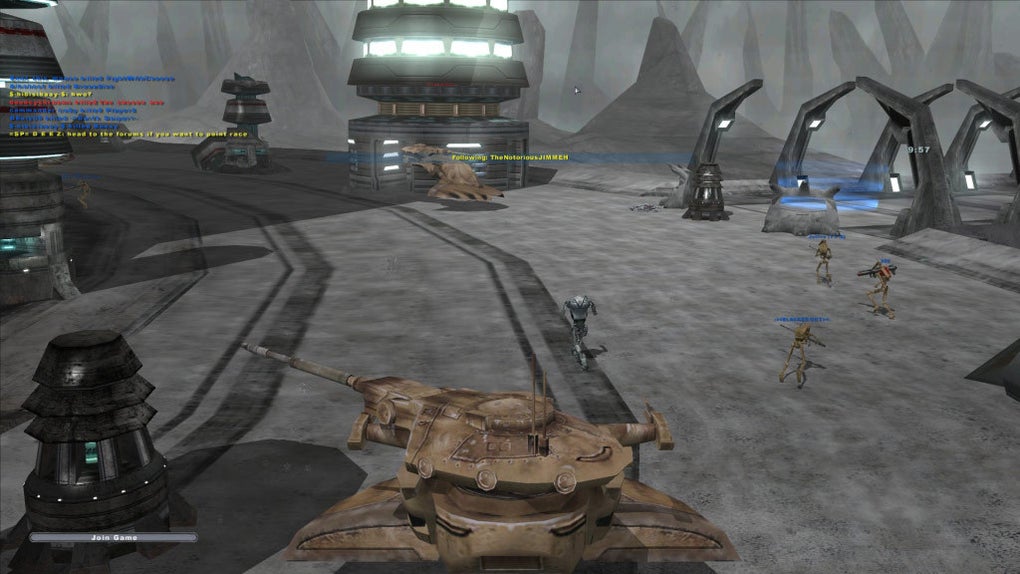The 2017 release of EA Star Wars Battlefront 2 was met with infamously mixed responses. The main outcry was centered on the loot crate debacle and pay-to-win progression, but there was more to it than just that. Hopeful fans are still looking wistfully back at Star Wars Battlefront 2 (2005), a game released years ago by the now-defunct Pandemic. Starry-eyed and wishful, it’s easy to wonder what might have been had they kept some of the key features that made that title so successful.
But exactly what were these features?
Despite the many adjustments, tweaks, and updates that EA Star Wars Battlefront 2 has undergone over the past six months, there are a good many design choices that set the game on a very different trajectory from the start. While there are numerous small elements, we’ve put together a list of what we think are the five biggest selling points from Battlefront 2005, elements that we never got to experience in EA’s.
If you’re interested in seeing for yourself and trying Battlefront 2005 firsthand, you can grab it here:
5. Players can’t change classes unless they die
Our first gripe is a small one, but one that we feel nonetheless deserves attention. The main game mode in the 2005 Battlefront was Conquest; a variant that focused on capture-and-hold tactics where the posts controlled allowed for unit spawn. There were two ways to win: Eliminating all the enemy reinforcements, or capturing all the command posts so that they couldn’t spawn any more units in to contest you.
These command posts served a second purpose, however: Players could use them to switch their selected class on the fly, alternating as needed between the engineer, sniper, infantry, or heavy trooper classes. This feature was not present in the very first Star Wars Battlefront (released in 2004), and its inclusion was such a radical improvement that they zeroed in on it multiple times throughout the tutorial mission – a level where the objectives could only be completed by switching classes. Pandemic really wanted to instill that mechanic in its players right off the bat.

We were surprised this feature was never implemented in EA’s Battlefront 2 since it so proudly highlighted the introduction of four playable classes available to the player. After the initial decision on a class the player is stuck with it until their death. Only then can they quickly decide whether they want to try a different approach. The reason for this choice is probably to allow players to more often choose whether they want to spend battle points on power-up classes or vehicles like the jet trooper or an AT-ST, but having to die just to get that choice? It seems counter-intuitive.
It’s especially frustrating when the game encourages you to stay alive to “earn 2x battle points.” Die and you have to start from scratch. We acknowledge that this isn’t a “design flaw” per se, but the choice is odd. We can’t help but feel its inclusion would have been a nice improvement.
4. Players can ride vehicles together
This isn’t the last time we’ll be bringing up EA’s Battlefront 2’s lack of co-op features. This point is more an example of where its missed. The 2005 Battlefront featured and implemented vehicles very differently than EA chose to. In the original, players could see a vehicle on the map, run to it, and ride it. It made sense, it was fun, it was an option for every player. Even the worst players in the match could beeline towards the nearest AT-AT walker or AAT for a chance to even the playing field. But that’s not even the biggest reason this design choice was so cool.

While vehicles in EA Battlefront 2 were power-ups unlocked by spending battle points, they were much more useful in Pandemic’s Battlefront 2.
The main difference? They could hold multiple players.
That AAT you saw on the streets of Theed? In Battlefront 2 2005 that could house both a driver and another player to operate the cannon up top. The clone AT-TE could have three players at once. The clone gunship? Four.

There was something special and exciting about you and three friends piling into a clone gunship during a space battle and manning the different positions. Your pilot navigated through enemy fire on the way to the opposing flagship, gingerly landing in their docking bay. The enemy AI pour out into the hangar area as the ship goes on full alert. The gunship you landed is getting shot by rockets, so you and your buddies are forced to pile out, dodging lasers and diving for cover while returning fire.
It grew to white-knuckle insanity trying to escape the flaming ruins of the flagship you and your friends sabotaged together. Then to be greeted by a victory screen as you boost away from enemy fighters?
Glorious.
Playing with your friends was such an integral element of the 2005 Battlefront, and the lack of it in EA Battlefront 2 brings us to our next big point:
3. Playing with friends was accessible and encouraged, local or online
Playing local splitscreen was a huge part the FPS genre in its early days. Series like Unreal Tournament, Ghost Recon, Call of Duty, Halo, and James Bond all found massive success from it, and splitscreen gaming evolved into a huge part of the FPS culture. Pandemic’s Battlefront 2 was a cornerstone of this evolution, and it took the formula to the next level with its class-based roleplaying, multi-person vehicles, and its (albeit limited) mechanics for commanding the game’s AI infantry.
EA Battlefront 2 does have local play, but it’s pretty restricting. By “restricting,” we mean that there’s no online co-op to speak of. There is splitscreen in arcade mode, but the game’s arcade mode really feels like an introduction to new players more than an actual real fleshed-out gametype. Even then, that local play is only available on console. PC players don’t get any co-op at all (and yet the game is still priced the same for both). Comparing this to Pandemic’s Battlefront 2, the lack of local play goes beyond co-op.

Splitscreen in Battlefront 2 2005 could also get competitive. At the start of the match, players can pick which faction they wanted to play as … and it didn’t have to be the same as the other players. Walking through the bot-congested halls of Polis Massa only to suddenly come across another player was a tense moment, and the firefights between the two of you would often decide the fate of the match.
Working together or fighting each other, local play created an extremely engaging atmosphere in Battlefront 2 2005 and it added a whole other dimension of strategy and excitement to the game. EA missed the mark here.
2. Galactic Conquest
Next up we had to mention EA’s exclusion of one of the original Battlefront’s defining game modes: Galactic Conquest. A Risk-style strategy mode that starts the player off owning only one planet on a simulated galaxy map. The way to win here was to conquer all the galaxy, which is at the beginning owned by the enemy faction. Each planet conquered earned you galactic credits to build, buff, and expand your army. It was a strategic chain of singular missions with a broad tug-of-war in the background. The enemy side always starts with the advantage, but over the course of the game, it shifts to your favor.

Galactic Conquest had been a core game mode in both Pandemic’s Battlefront games, and was a key component to its replayability and longevity. It added depth to every match and challenged players to think on a more tactical level before jumping into a firefight. It’s an angle that’s lacking in EA’s Battlefront 2, and we really miss it.
1. AI bots
Of all the differences we’re covering here, we think this one’s the biggest. Battlefront 2 2005 had AI bots on every match and it completely changed the way the game felt. The huge waves of enemies, the constantly respawning units on both sides, the Jedi cutting through swathes of infantry to get to the next command post – it all felt like we were dropped into a pivotal moment in the titular “war.” Here’s a video of the rare EA Battlefront 2 player who hadn’t first played Battlefront 2005, and his thoughts on what AI add to the mix:
The only game modes that feature AI in EA’s Battlefront 2 are the campaign, arcade mode, and Starfighter Assault. The latter of which was one of our favorites largely due to its inclusion of bots. We’re not alone in thinking this either. Disclaimer: Angry Joe is angry. May contain NSFW language.
Putting “battlefront” in the title of your game implies just that – a peek at the surrounding war zone through the eyes of an infantry soldier, scout, or pilot. Compare, for instance, Kashyyyk from Pandemic’s battlefront 2 to EA’s:

Pandemic’s map is less vibrant, far smaller, equally linear, and largely open. EA’s is massive, colorful, breathing, and lush. But play it and you’ll see where the problem lies – the amount of time you spend in an actual firefight in EA’s Battlefront is absolutely dwarfed by the amount of time walking from fight to fight.

Larger maps aren’t always a great thing, especially when the only enemies to fight are the enemy players. Sure they’re way tougher than the laughably incompetent AI from Battlefront 2 2005, and sure it’s more rewarding when you gun down enemy players rather than nameless bots, but a healthy mix is what made EA’s Starfighter Assault so enjoyable. If they could incorporate ground AI into the online game modes, it would make a dramatic difference, and one that we think is for the better.
If EA makes a Battlefront 3, we hope to see some of these aspects included in its design. Would that be enough to renew fans’ dreams of one day having a game to match the awesome fun of the original Battlefront 2?
Hmm. Clouded the future is.



